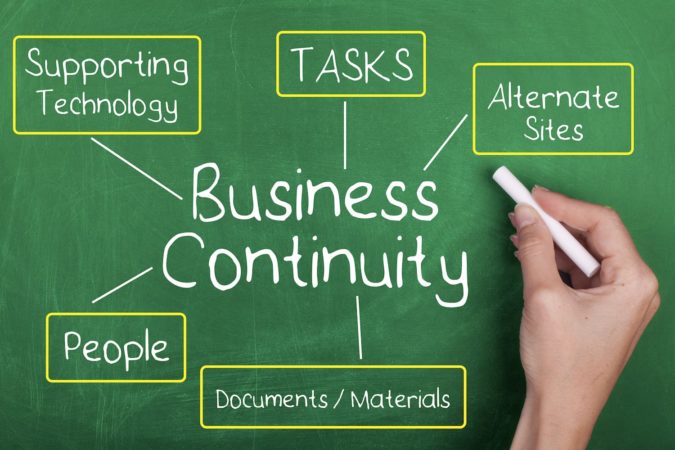
Let’s find what you’re looking for. Search our resources, blog, pages, and any other content on our website.
With the world being more unpredictably volatile lately, have you thought about what would happen if your business faced a disastrous scenario? It’s easy to become complacent on this subject if you’ve never had anything happen to you. However, there’s a first time for everything, and being prepared is essential based on past statistics.
CNBC recently reported 40% of all small businesses never recover after a disaster takes place. The statistics for overall businesses are identical, including Forbes noting that only 29% of these businesses are still operating after two years. These sobering statistics need your attention, which means you need a business continuity plan. If you’re new to what business continuity means, it’s time to officially define it and tell you how to set up a plan.
A simple definition is this: Being able to plan for any difficult situation so your business can continue functioning without any interruptions. While this might sound impossible in the worst disasters, it’s not, when you create a plan you can realistically use. The quality of your plan is what’s most important since you might overlook things that negate the purpose of continuity in the first place. Don’t assume you can continue to function during disasters without planning first. You may think you have everything in mind until the time comes and you realize the uniqueness (and bleakness) of the disaster.
Creating a business continuity plan is far different from disaster recovery. Many often confuse these terms since they both relate to disasters. Disaster recovery is more about steps you’d take to recover immediately after a disaster happens. A business continuity plan is done long in advance and tells you how you’d continue to function to provide your key products and services. If you’re still confused with this distinction, think about business continuity as protecting your employees and customers, as well as preventing financial losses for your company. A plan is also going to help you design service alternatives to keep your applications going when your usual IT shuts down. So how do you put together an effective plan? It all starts with some key elements.
To begin, you’ll want to choose which of your employees would become responsible for taking action when the worst scenarios occur. Outlining action steps, alternate facilities, recovery inventories, priorities, and time-frames are all major categories to focus on in the beginning. Afterward, it’s mandatory to keep your plan up-to-date as time goes on. Things change quickly, meaning the alternate technologies you plan to use may become outdated. Designated employees you had in your plan to take specific actions might move on and need replacing. Modifying processes and procedures is also going to become important, as is ongoing training for your employees. Your recovery teams need complete awareness of their responsibilities.
Far too many businesses think they can still operate at a near primitive level if something happens to their IT. In today’s competitive business climate, this isn’t realistic. If all businesses went through the same disaster, you’d perhaps be on equal ground. Considering most disasters are going to only strike your local area, you still have to operate at optimum level to stay competitive with everyone else. Despite reliance on technology, we have to keep it going to stay in the competitive game. A good business continuity plan shows you how to do this without having to face dreaded downtime. Your business undoubtedly relies on technology for its day to day operations. The most important step in creating your plan is identifying what the most vital technologies are and finding a way to back or replicate their functions in case of a disaster. Talk with your rep at Access One to find out the best plan of action for your IT needs.
All the evidence above of what could happen should give you insight into why business continuity shouldn’t be tucked away. It’s time to discuss it with all your employees and take serious action. Complacency is one of the worst states of mind for any business enjoying success. Don’t take any risks in the coming year as the world likely becomes more unpredictable. Contact Access One to learn more about how we can work with the rest of your company and service providers to create a business continuity plan that truly works.